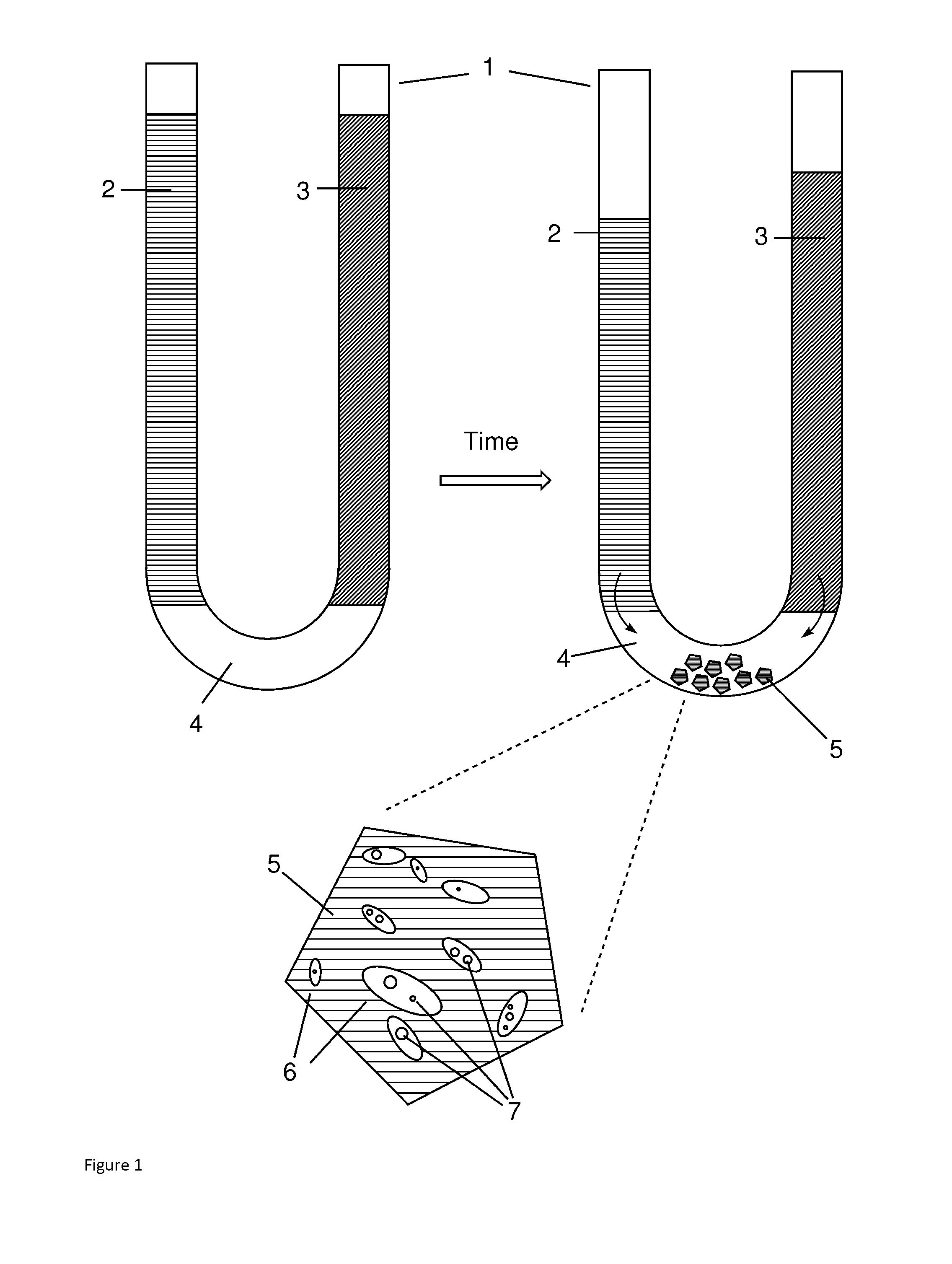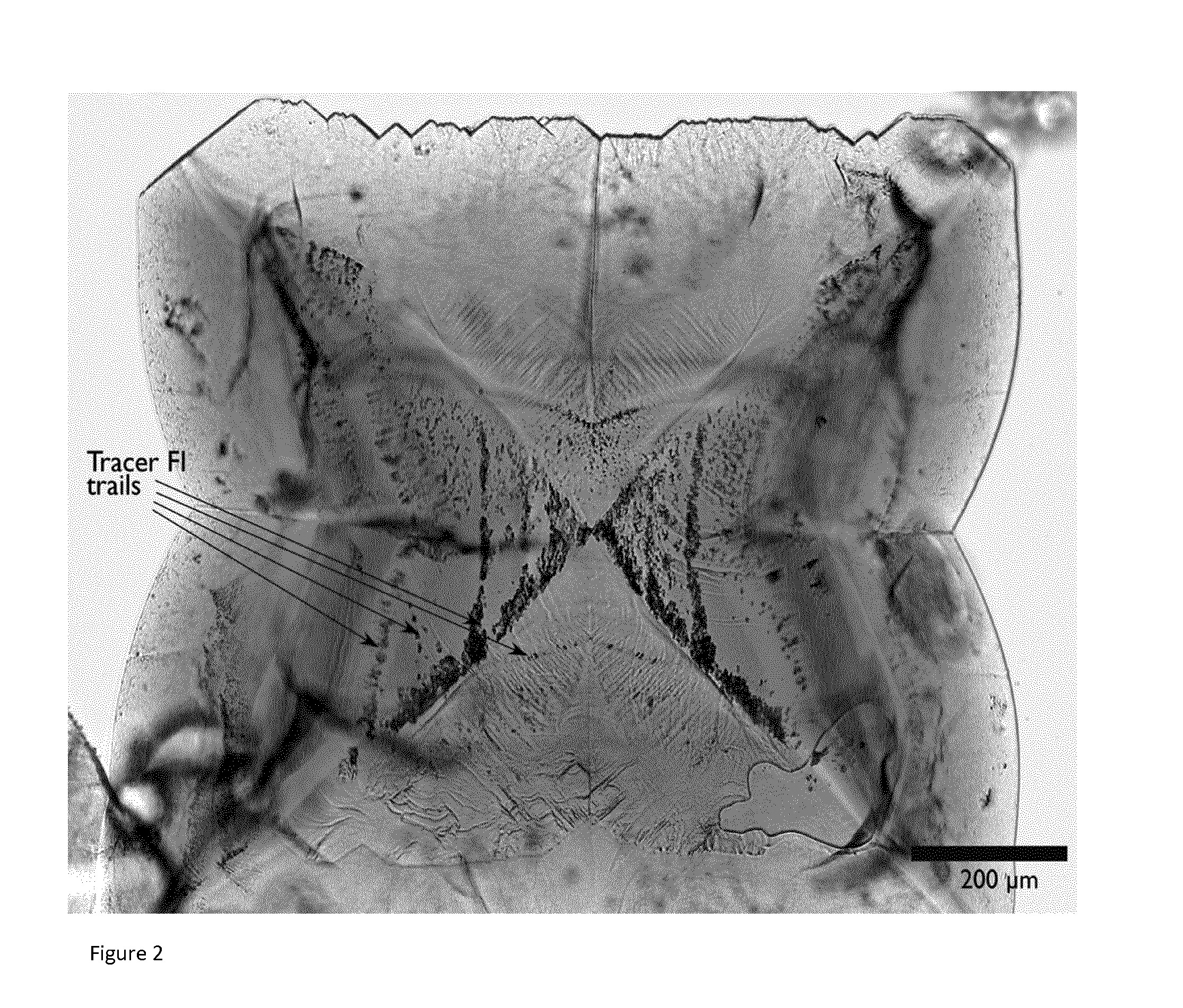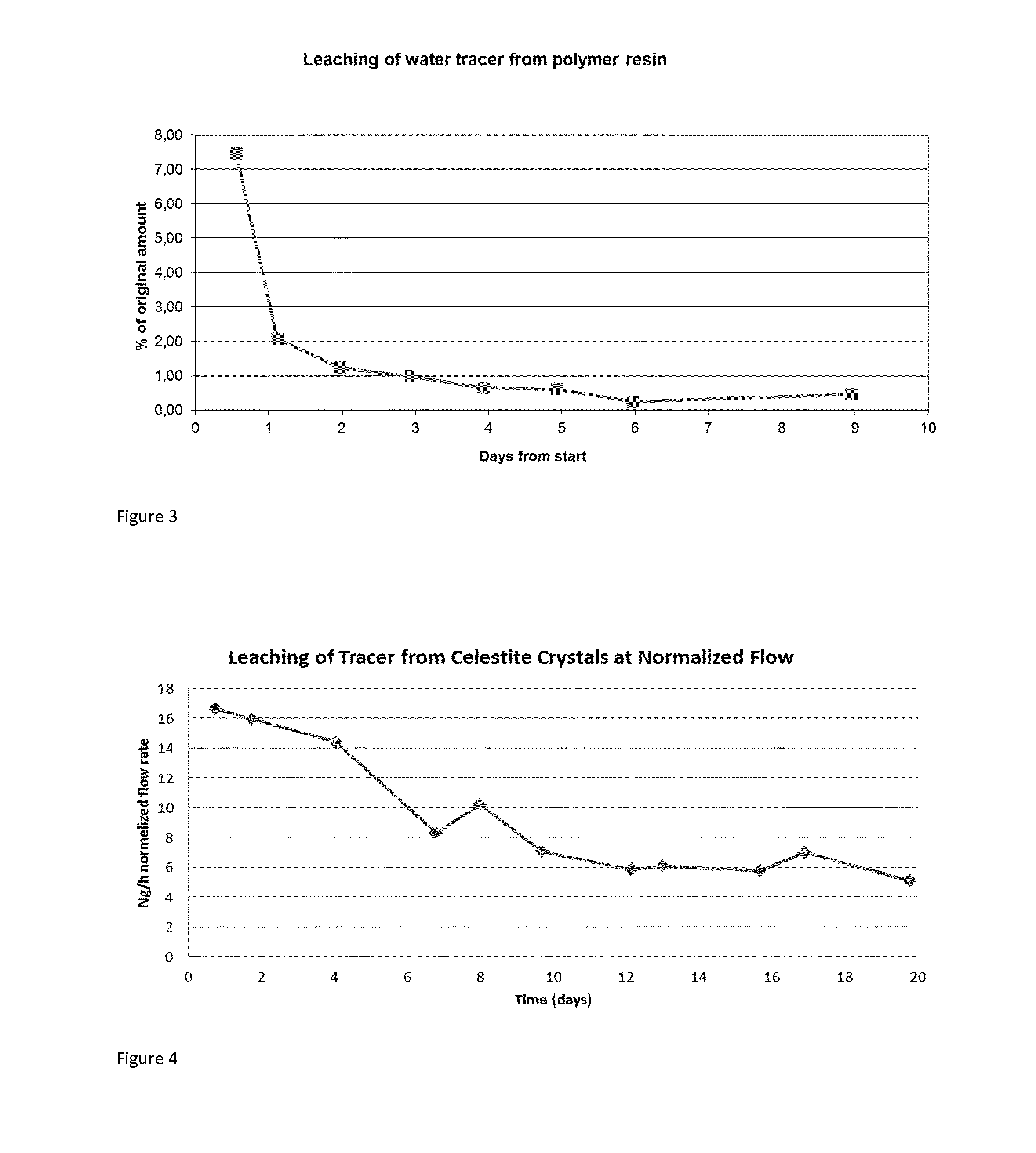Mineral-Encapsulated Tracers
a technology of mineral crystals and tracers, which is applied in the field of synthetic mineral crystals, can solve the problems of increasing decreasing exponentially with time, and slowing down of release rate, so as to reduce the diffusion rate of tracer, increase the amount of trapped tracer, and reduce the diffusion rate
- Summary
- Abstract
- Description
- Claims
- Application Information
AI Technical Summary
Benefits of technology
Problems solved by technology
Method used
Image
Examples
example 1
[0062]An apparatus suitable for the method of this Example is illustrated in FIG. 1A glass tube 150 mm long and with inner diameter 22 mm was filled with silica gel with density 1.02 g / ml polymerized at pH 5.5 with HCl. Reactant 1 as shown in FIG. 1 was 0.5 M SrCl2 solution in water, and Reactant 2 was 0.5 M Na2SO4 and 0.01 M 5(6)-carboxyfluorescein. The tube containing the polymerized silica gel was immersed in a silicon oil bath with a temperature of 50+ / −0.2° C. for 10 days. The silica gel containing the celestite crystals was transferred from the glass tube to a glass beaker and the silica gel was dissolved in diluted sodium hydroxide solution. The crystals were washed several times in water to remove silica gel particles and washed in ethanol before drying for one hour at 60° C. in a heating cabinet.
[0063]A photograph of one of the celestite crystals containing the fluorescent tracer both as fluid inclusions and with the tracer trapped within the crystal framework is shown in F...
example 2
[0065]The same set-up and conditions as for Example 1 was applied, but the Reactant 1 was 1 M BaCl2 and Reactant 2 was made up of 1 M Na2SO4 with 0.02M 5(6)-carboxyfluorescein. Small crystals of barite were formed containing tracer. The high concentration of Ba and sulfate ions resulted in rapid formation of crystals with feather-like appearance as shown in FIG. 5.
example 3
[0066]The same set-up as for Example 1 was applied with Reactant 10.5 M CaCl2 and Reactant 2 0.5 M Na2CO3. An Agar Agar gel solution was made containing 2% 5(6)-carboxyfluorescein sodium salt. Undissolved particles of 5(6)-carboxyfluorescein (acid) were also mixed into the gel solution before hardening. The experiment was performed at room temperature (˜24° C.) and stopped after 20 days. The CaCO3 crystals formed were washed in boiling deionized water and dried at 60° C. They can be seen on FIG. 6. The content of 5(6)-carboxyfluorescein was measured after dissolution of a weighed amount of crystals in diluted HCl and was found to be 2 mg / g.
PUM
 Login to View More
Login to View More Abstract
Description
Claims
Application Information
 Login to View More
Login to View More - R&D
- Intellectual Property
- Life Sciences
- Materials
- Tech Scout
- Unparalleled Data Quality
- Higher Quality Content
- 60% Fewer Hallucinations
Browse by: Latest US Patents, China's latest patents, Technical Efficacy Thesaurus, Application Domain, Technology Topic, Popular Technical Reports.
© 2025 PatSnap. All rights reserved.Legal|Privacy policy|Modern Slavery Act Transparency Statement|Sitemap|About US| Contact US: help@patsnap.com



